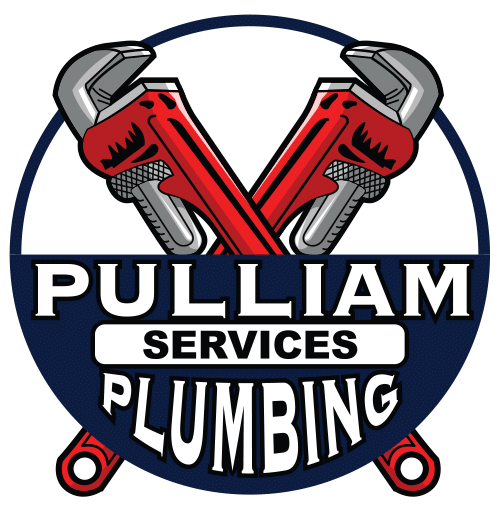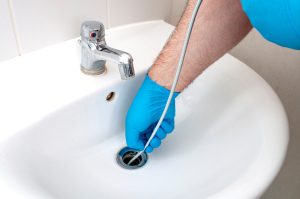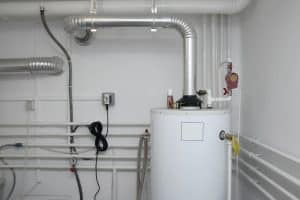While Boerne and Fair Oaks Ranch enjoy relatively mild winters compared to northern climates, our Texas Hill Country location experiences sudden, severe cold snaps that catch homeowners unprepared. With an average of 46 mornings below freezing annually and historical record lows reaching -4°F, our region’s plumbing systems face unique challenges during unexpected freeze events. Understanding proper preparation protects your home from costly water damage and ensures continued plumbing function during rare but dangerous cold weather.
Understanding Hill Country Freeze Risks
Unique Texas Freeze Patterns
Texas cold snaps arrive suddenly with little warning, dropping temperatures 40-50 degrees within hours. Unlike gradual northern freezes, these rapid temperature changes give homeowners minimal time to implement protective measures, making advance preparation critical.
Our limestone bedrock and shallow soil profiles provide little insulation for underground pipes compared to deeper northern installations. Water lines that remain unfrozen in gradual temperature drops can freeze rapidly during sudden arctic air intrusions common in Texas winter weather patterns.
Building Construction Vulnerabilities
Hill Country homes often feature construction methods adapted to hot climates rather than freeze protection. Exterior walls may lack adequate insulation, and plumbing installations may prioritize cooling season performance over freeze protection.
Many homes built since 2000 include plumbing in exterior walls, attic spaces, or crawl areas that become vulnerable during extreme cold events. These modern construction practices increase freeze risks during rare but severe Texas cold snaps.
Municipal Infrastructure Challenges
Local municipal water systems face significant challenges during freeze events due to increased demand, pressure fluctuations, and infrastructure not designed for extended freezing conditions. These system-wide problems compound individual property freeze risks and can leave entire neighborhoods without water service.
Preparation Strategies for Texas Homes
Insulation and Weatherization
Focus protective efforts on exposed pipes in crawl spaces, attics, and exterior walls. Pipe insulation designed for southern climates often proves inadequate during severe freeze events, requiring supplemental protection methods.
Seal air leaks around pipe penetrations through exterior walls and foundations. Cold air infiltration can freeze pipes even when surrounding areas remain above freezing temperatures.
Install foam pipe insulation on all exposed water lines, paying particular attention to pipes in unheated areas like garages, utility rooms, and outdoor meter connections. Use electrical heat tape on vulnerable sections that cannot be adequately insulated.
Faucet and Fixture Protection
Identify exterior faucets and irrigation system connections that require special attention during freeze events. Install frost-proof faucets or insulated covers that provide protection during extreme cold periods.
Disconnect and drain garden hoses, irrigation systems, and pool equipment before freeze events. Trapped water in these systems can freeze and cause extensive damage to both equipment and connected plumbing systems.
Emergency Heating Options
Prepare safe supplemental heating methods for critical pipe areas during extreme cold events. Electric space heaters designed for unattended operation can protect vulnerable pipe installations when properly installed and monitored.
Avoid open flame heating methods like propane heaters or candles near plumbing installations. These methods create fire hazards and may not provide adequate protection during extended freeze periods.
Pre-Freeze Action Checklist
48-Hour Advance Preparations
Monitor weather forecasts carefully and begin preparations when temperatures are predicted to drop below 28°F for more than 4 hours. Texas freeze events often exceed initial forecasts, making early preparation critical.
Locate and test your main water shutoff valve to ensure it operates properly. During freeze emergencies, quick water shutoff can prevent extensive damage if pipes burst before repairs can be completed.
24-Hour Critical Actions
Open cabinet doors under sinks to allow warm air circulation around pipes in exterior walls. This simple action can prevent freeze damage in marginally protected installations.
Set water heater temperature to maximum safe setting (140°F) to ensure hot water availability and maintain higher water temperatures throughout the system during extreme cold.
Fill bathtubs and large containers with water for emergency use if municipal systems fail during freeze events. Store additional water in heated areas to prevent freezing.
Immediate Pre-Freeze Actions
Allow faucets to drip slowly to maintain water movement through vulnerable pipe sections. Moving water resists freezing longer than static water, providing critical protection during the coldest periods.
Run water briefly from all faucets every few hours to ensure continued flow and identify developing freeze problems before complete blockages occur.
During Freeze Events
Active Monitoring
Check water flow from faucets every 2-3 hours during extreme cold periods. Reduced flow often indicates developing ice formations that require immediate attention.
Monitor for unusual sounds from plumbing systems such as banging or gurgling that may indicate ice formation or pressure problems developing within pipe systems.
Emergency Response
If water flow stops completely, locate the frozen section and apply gentle heat using hair dryers, heating pads, or space heaters. Never use open flames or high-temperature devices that can damage pipes or create fire hazards.
Open affected faucets before applying heat to allow melting ice to flow out rather than creating pressure buildup that can burst pipes.
Safety Considerations
Maintain carbon monoxide detection when using supplemental heating during freeze events. Poor ventilation combined with heating equipment creates dangerous conditions that have caused fatalities during Texas freeze events.
Avoid leaving electrical heating devices unattended unless specifically designed for that purpose. Fire risks increase significantly during freeze events when heating demand peaks.
Post-Freeze Recovery
Damage Assessment
Inspect all plumbing fixtures and exposed pipes for signs of freeze damage after temperatures return above freezing. Pipe damage may not become apparent until water pressure returns to normal levels.
Check for water damage in crawl spaces, basements, and wall cavities where burst pipes may have leaked before being discovered. Hidden damage can cause ongoing problems if not addressed immediately.
System Restoration
Turn water heater temperature back to normal settings (120°F) once freeze danger passes. Extended operation at maximum temperatures wastes energy and may damage water heating equipment.
Test all plumbing fixtures for proper operation and water pressure. Some freeze damage may affect fixture operation without causing obvious leaks.
Professional Repair Services
Emergency Response
Contact emergency plumbing services immediately if pipe damage is discovered. Quick professional response minimizes water damage and restores essential services faster than attempting complex repairs independently.
Document all freeze damage with photographs for insurance claims before beginning cleanup or repair activities. Proper documentation ensures maximum coverage for repair costs.
Preventive Improvements
Schedule professional evaluation of freeze vulnerabilities after severe cold events. Experienced contractors can identify problem areas and recommend improvements to prevent future damage.
Consider upgrading vulnerable plumbing installations with freeze-resistant materials and improved insulation designed for Texas climate conditions.
Commercial Property Considerations
Business Continuity Planning
Commercial properties face additional challenges during freeze events, including employee safety, customer service, and inventory protection. Develop comprehensive freeze response plans that address both plumbing protection and business operations.
Consider backup water supplies and alternative facility arrangements for extended freeze events that may affect business operations for several days.
Insurance and Liability
Review commercial insurance coverage for freeze damage and business interruption. Standard policies may exclude certain types of freeze damage or require specific preventive measures to maintain coverage.
Long-Term Resilience Improvements
Infrastructure Upgrades
Consider whole-house improvements such as enhanced insulation, upgraded water heater systems, and freeze-resistant plumbing materials during renovation projects.
Install automatic shutoff systems that respond to temperature sensors and prevent freeze damage when properties are unoccupied during cold events.
Professional Consultation
Work with local contractors experienced in Texas freeze conditions and Hill Country construction challenges. Pulliam Plumbing provides comprehensive freeze protection services throughout Boerne and Fair Oaks Ranch, with experience helping homeowners prepare for and recover from severe Texas cold snaps.
Understanding your property’s freeze vulnerabilities empowers you to take effective protective action. Proper preparation prevents costly damage and ensures continued plumbing function during rare but dangerous Texas freeze events that challenge our typically mild Hill Country climate.




